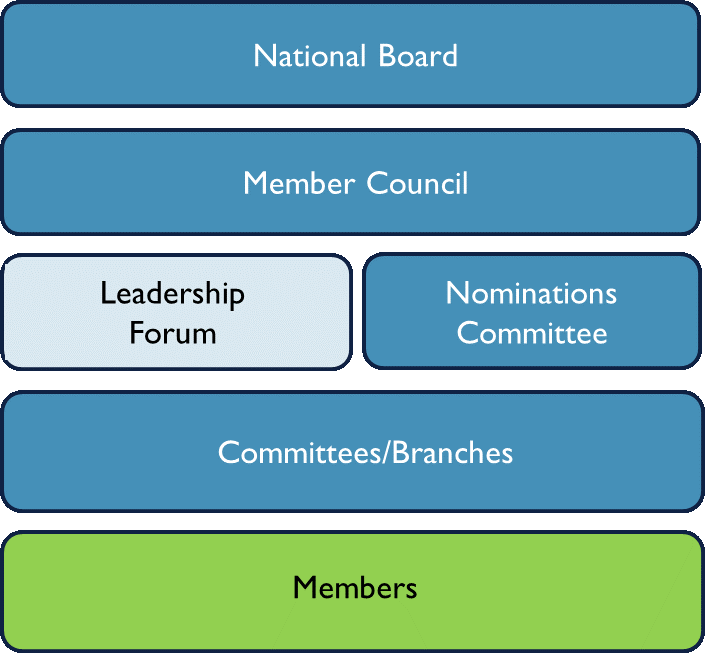Governance design principles and guidance: not-for-profit organisations
By Randall Pearce - April 21, 2021
Good governance design principles and guidance for not-for-profits are designed to assist directors and boards on good governance and how they can implement practical approaches in improving governance.
Governance involves more than a board of directors: it is a system of interconnected bodies which help an organisation enhance performance, manage risk, and comply with the law. According to the Governance Institute of Australia, ‘Governance encompasses the system by which an organisation is controlled and operates and the mechanisms by which it and its people are held to account.’
While a board of directors sits at the heart of all governance systems, the governance of not-for-profit organisations also includes multiple bodies and processes that help it manage its many stakeholder relationships, including the all-important relationship with its members.
For example:
- the committees and working groups it creates
- the member meetings and forums it holds
- the consultation mechanisms it uses to keep abreast of member and stakeholder opinion
- and the regional organisations it relies upon to implement its decisions on the ground, all need to work together to govern not-for-profit organisations effectively

While we are fortunate in Australia to have organisations like the Australian Charities and Not-for-Profit Commission, the Australian Institute of Company Directors and the Governance Institute of Australia that publish and promote best practice governance principles and guidance for not-for-profit organisations, they focus almost exclusively on the roles of boards and how they operate. Comparatively less attention has been paid to the overall design of governance systems.
The following design specifications build upon the Not-for-Profit Governance Principles published by the AICD, but they go a step further and suggest how to design governance systems for not-for-profit organisations in Australia. They are used here not as hard and fast rules but as practical benchmarks against which the governance systems can be evaluated and analysed. And ultimately, a guide to re-design.
Governance arrangements should be designed to be…
Fit for purpose
Governance arrangements should be designed to ‘fit’ the purpose of not-for-profit organisations and scaled according to their size and complexity. However, governance is a dynamic process and decision-making processes need to be regularly reviewed and updated. As an organisation grows and its purpose evolves, new governance arrangements should be created, and redundant structures discarded, to ensure the continued relevance and effectiveness of the governance system.
Clear
Each component of the governance system of a not-for-profit organisation should play a clear and unmistakable role. Duplication and overlap between the functions of two or more components should be minimised to avoid role conflict and make the best use of volunteer time and organisational resources.
Efficient
The job of volunteers should be ‘doable’ and directors should have skills that match an organisation’s complexity and the issues it faces. Governance arrangements should allow the Board to call meetings, achieve quorum and conduct votes to accomplish its work within a reasonable timeframe.
Accountable
Under Australian not-for-profit law, members are the owners of a not-for-profit company and have a right to hold the Board and other participants in the governance system to account. Membership is a contract between the members and the directors who represent them around the board table. A good governance system should operate according to democratic principles and regular open elections should be held. The roles of the board and management should be kept separate.
Transparent
Stakeholders should have a clear idea of how decisions are made within not-for-profit organisations and should have access to information about how the governance system operates. People affected by a decision should have an opportunity to be consulted on the decision and a process should be in place to receive and respond to feedback and complaints. The board should report to stakeholders about an organisation’s performance and financial position regularly.
Like the AICD Not-for-Profit Governance Principles themselves, THINK encourages readers to use an ‘if not, why not?’ approach to applying these specifications to the design of all components of a not-for-profit governance system. Design should be added to good governance principles and guidance across each element of the system.
- An independent board of directors
- A system of board sub-committees for key functions such as audit and risk
- Nominations Committee and election processes
- Member meetings (including annual general and special general meetings) and other membership-wide forums for participatory democracy
- Sub-divisions that have responsibility for delivering programs and member services within a defined geographic or functional area
- Combined leadership and management forums where the leadership of the main organisation and its sub-divisions can coordinate the delivery of programs and member services
- A membership value proposition with clear benefits and (voting) rights
When these bodies and functions are ‘connected up’, the governance system should operate as a system that helps not-for-profit leaders deliver on their all-important purpose.
Our approach rests on the simple premise that our clients, their boards, staff and stakeholders already have all the experience and know-how to solve their problems. Our job is to draw out that expertise through research and facilitation and harness it to move the organisation forward. If you would like to know more about our services or how we may be able to advise you, please contact me.

Randall Pearce is one of Australia’s foremost experts in not-for-profit management. A former association CEO, management consultant, board chair and executive coach, Randall has worked to maximise the performance and governance of some of the nation’s top peak bodies, associations, NGOs and government agencies.


Recent Comments